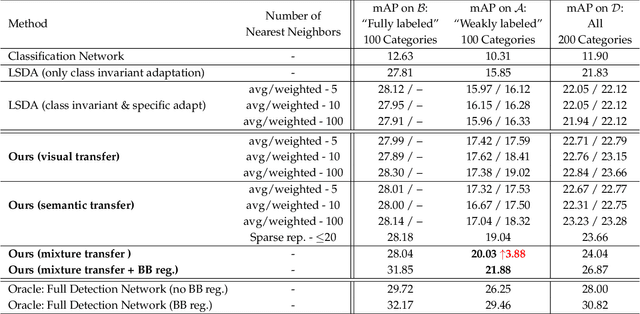Emmanuel Dellandrea
Bayesian Optimization for Developmental Robotics with Meta-Learning by Parameters Bounds Reduction
Jul 30, 2020



Abstract:In robotics, methods and softwares usually require optimizations of hyperparameters in order to be efficient for specific tasks, for instance industrial bin-picking from homogeneous heaps of different objects. We present a developmental framework based on long-term memory and reasoning modules (Bayesian Optimisation, visual similarity and parameters bounds reduction) allowing a robot to use meta-learning mechanism increasing the efficiency of such continuous and constrained parameters optimizations. The new optimization, viewed as a learning for the robot, can take advantage of past experiences (stored in the episodic and procedural memories) to shrink the search space by using reduced parameters bounds computed from the best optimizations realized by the robot with similar tasks of the new one (e.g. bin-picking from an homogenous heap of a similar object, based on visual similarity of objects stored in the semantic memory). As example, we have confronted the system to the constrained optimizations of 9 continuous hyperparameters for a professional software (Kamido) in industrial robotic arm bin-picking tasks, a step that is needed each time to handle correctly new object. We used a simulator to create bin-picking tasks for 8 different objects (7 in simulation and one with real setup, without and with meta-learning with experiences coming from other similar objects) achieving goods results despite a very small optimization budget, with a better performance reached when meta-learning is used (84.3% vs 78.9% of success overall, with a small budget of 30 iterations for each optimization) for every object tested (p-value=0.036).
Visual and Semantic Knowledge Transfer for Large Scale Semi-supervised Object Detection
Mar 13, 2018



Abstract:Deep CNN-based object detection systems have achieved remarkable success on several large-scale object detection benchmarks. However, training such detectors requires a large number of labeled bounding boxes, which are more difficult to obtain than image-level annotations. Previous work addresses this issue by transforming image-level classifiers into object detectors. This is done by modeling the differences between the two on categories with both image-level and bounding box annotations, and transferring this information to convert classifiers to detectors for categories without bounding box annotations. We improve this previous work by incorporating knowledge about object similarities from visual and semantic domains during the transfer process. The intuition behind our proposed method is that visually and semantically similar categories should exhibit more common transferable properties than dissimilar categories, e.g. a better detector would result by transforming the differences between a dog classifier and a dog detector onto the cat class, than would by transforming from the violin class. Experimental results on the challenging ILSVRC2013 detection dataset demonstrate that each of our proposed object similarity based knowledge transfer methods outperforms the baseline methods. We found strong evidence that visual similarity and semantic relatedness are complementary for the task, and when combined notably improve detection, achieving state-of-the-art detection performance in a semi-supervised setting.
* TPAMI. correct some typos
 Add to Chrome
Add to Chrome Add to Firefox
Add to Firefox Add to Edge
Add to Edge